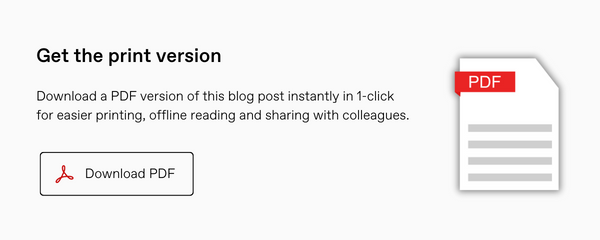Why Your Business Must Have a Cash Meeting
In the business world, cash is one of the most significant and highly liquid assets you have. That’s why we tell our clients: ‘Cash is king’.
Understanding cash flow management – or how you collect, control, disburse and invest your cash – is therefore crucial for the success of any business.
All business owners should be conducting regular finance meetings, which include a comparison of actuals to budget and reviewing a full set of financial statements such as your balance sheet and profit and loss (P&L) statement. But there’s another meeting that may be even more powerful for business profitability and success – a cash flow meeting.
Jump to these sections to learn:
→ How a cash meeting differs from a finance meeting→ How to run a cash flow meeting
→ What to discuss in a cash meeting
→ How to run a successful cash meeting (that doesn’t waste your time)
→ Key cash flow metrics you should be measuring
Why Your Business Needs a Cash Flow Meeting
What is a cash flow meeting?
A cash flow meeting, or simply a cash meeting, is regular scheduled meeting within a business that is solely devoted to the discussion of cash. This includes improving cash flow and having more cash available within the business.
Why should you have them?
Cash meetings give you short-term, operational information that help you understand, manage and forecast cash flow. They’re designed to give you greater financial visibility that ultimately helps you make better business decisions.
How do they differ to other finance meetings?
You might be wondering why businesses should have a separate cash meeting if you're already meeting about finances every month.
Here are some reasons cash meetings are unique, and should be conducted separately to other finance-related meetings.
- Short-term: Cash meetings are specifically about short-term operational information to improve the available cash in your business. They’re not about long-term planning.
- Pure focus on cash: Unlike finance meetings or reviews, cash meetings are all about cash, not profit or strategy. They’re not for discussing variances in financial statements or answering questions about types of expenses.
- People: The divisional representatives who attend a cash meeting are typically more diverse than a finance meeting, including includes staff from sales, operations and purchasing teams. Because the people within your business who can influence its cash position are varied, having a discussion focused solely on cash ensures that key team members are on the same page.
- Team buy-in: One of the priorities of a cash meeting is to get your team to treat the business’ money like their own, which means they should prioritise accountability and innovative ideas.
- Privacy: Because of the sensitive nature of finance meetings, which may delve into personal financial details of your business and yourself, it is important that only staff relevant to influencing your cash position attend cash flow meetings.
How to Run a Cash Flow Meeting
There are several elements involved in holding a cash meeting, including ensuring the relevant team members attend and discussing the relevant areas that influence the business’ cash position.
Who should attend a cash flow meeting?
Improving cash flow is not the responsibility of just one area or one department; it's a collaborative approach designed to get each team members considering how to improve each of the seven elements.
These are the key team members or divisions that should attend a cash meeting.
- Business owner/s: As the people with the primary interest in the business – it’s your cash, your resource, your risk – the owner or co-owners must attend.
- Finance team: They hold the knowledge and understanding of the current financial position.
- Sales team: You need your sales team, or at least one representative of your sales team, as they are involved in influencing the business’ cash position through sales strategies.
- Purchasing and operations: This includes employees involved in buying decisions or warehouse management. This might be one person or multiple people involved, but you need anyone who is involved in purchasing and buying decisions within your business.
As you can see, this is likely not a small meeting. It also become clear why a separate cash meeting is required, separate to a finance meeting which deals with more sensitive financial information.
What should you discuss in a cash flow meeting?
There are seven key areas that influence a business’ overall cash position. Going through each one helps clarify why different people from different departments come into this meeting.
To execute your cash meeting, go through these areas individually and get each relevant department to speak about them.
Area of Influence #1: Sales
Goal: Selling more.
While there can be exceptions to this, generally increasing sales without changing any other variables leads to more cash. Get your sales team to report on monthly sales. Then, consider any trends: are sales moving up, plateauing, or trending downward? This will give you a clear picture of where your cash might be headed.
Area of Influence #2: Gross Profit
Goal: Increase gross profit.
Gross profit – your revenue minus costs of goods sold – can be improved through optimising direct costs and revenue. This involves your finance team, who should report on gross profit in dollars and as a percentage.
Area of Influence #3: Expenses
Goal: Reducing expenses.
Expense reduction is simply having less money go out the door. However, this typically isn't a primarily area to focus on as there is only a finite amount of improvement that can be made. But it’s still important to bear in mind, because even reducing overhead expenses from 20% to 19.7% translates into real dollars saved.
Area of Influence #4: Purchasing
Goal: Buying better.
While expense reduction is simply removing an expense from your business, improving buying is getting the same overhead expense at a better price. For example, if supplier A charged $11 for a product but supplier B charged $10 for the exact same product, you'd want to purchase from supplier B as often as possible. Discuss how purchasing and operations staff can monitor like-for-like purchases over time to recognise savings.
Area of Influence #5: Debtors
Goal: Reducing debtor days.
Another area of influence is reducing debtors, or the customers that have bought from with credit (i.e. taking the product or service, and committing to paying you at a later date). To improve debtors days, discuss with your collections team how can you get debtors to pay quicker, to get cash coming in sooner, and your sales team, who also influences how soon debtors pay you.
Area of Influence #6: Creditors
Goal: Balancing creditor days with cost.
There are two considerations when it comes to creditors. The first is to look at how many days it takes to pay your creditors, and considering how you can increase this. To be clear, we don’t mean unethically delaying paying your creditors. Rather, look for suppliers who will give you credit (e.g. for 30, 45 or even 60 days) to pay your account instead of paying cash immediately. This means you’re holding cash in your business longer, and using other people’s money to help you grow.
Alternatively, you might be better off reducing your creditor days if it means you can get a better price, because that means more gross profit.
Area of Influence #7: Stock
Goal: Reducing stock days.
Finally, optimising your stock position means increasing cash. Understanding your stock days (also known as days in inventory), or the how long it takes from when you receive inventory to when you sell it, can help show whether your business is operating efficiently or not. This is calculated by dividing the cost of average inventory by the cost of goods sold, multiplied by the period length. This would involve both your sales team, who need to have stock to sell, as well as procurement, who need to make sure they purchase enough and that the buying decisions are correct.
How to Ensure Cash Meeting Success
For business owners who value financial stability and want their business to run effectively with minimal daily involvement, a cash flow meeting shouldn’t be ‘just another meeting’ to fill your calendar. To ensure they’re genuinely productive and useful, here are some tips.
Conduct them regularly and efficiently
We recommend holding a cash meeting once a month, and not letting them run for more than an hour. Make them sharp and efficient.
Set and review key action items
Each cash flow meeting should conclude with clear action items that are assigned to relevant team members. Accountability is vital to ensure progress between meetings. Action items from the previous meeting should be reviewed at the start of the next one, holding all participants responsible for their respective parts.
Establish key metrics
It’s one thing to have a conversation around strategies for improvement, but a business’ cash position itself is not the sole metric to judge performance on. This is because one department might be improving significantly, while another might be dropping the ball. Your overall cash position is a collection of these different elements, and should be considered independently.
For each area of influence, here are our recommended metrics to measure:
- Selling more: First, look at your monthly sales (as a dollar figure). Then consider any trends: are sales moving up, plateauing, or trending downward?
- Gross profit: Analyse this as both gross profit in dollars (which measures quantity) and gross profit percentage (which measures quality).
- Expense reduction: Assess overhead expenses in both dollar value and as a percentage of revenue.
- Buying Better: Compare like-for-like purchases over time to see savings.
- Reducing debtors: Track ‘days debtors’ to gauge how quickly the business is being paid.
- Increasing creditors: Monitor ‘days creditors’, noting you may find a balance that yields more gross profit by paying sooner but at a better price.
- Stock: Calculate ‘stock days’, the time from receiving to selling stock.
Conclusion
A cash flow meeting is more than a traditional finance meeting: it’s a strategic initiative that involves cross-department collaboration to optimise the business’ overall cash position.
By engaging key team members, focusing on the seven influential areas, tracking key metrics and ensuring accountability, businesses can make significant strides in improving their cash position, profitability and equity. Ultimately this leads to greater financial stability, solidifying cash meetings as an essential tool to foster a culture of financial responsibility and innovation.
Learn everything we teach our clients for free
Join 350+ business owners & key decision-makers who receive free weekly business & accounting tips, delivered straight to your inbox every Wednesday. Sign up now.



